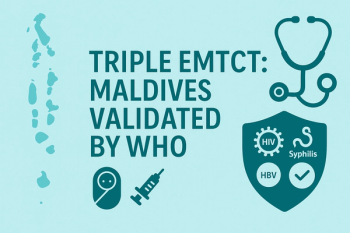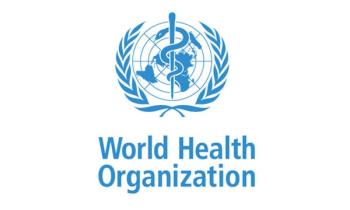A new CDC-led analysis estimates that the true annual burden of symptomatic coccidioidomycosis in the United States may be 10 to 18 times higher than reported through national surveillance systems. In 2019, researchers estimated approximately 273,000 symptomatic cases of the fungal infection, compared with the substantially lower number captured in official reports. The modeling study also estimated 23,000 coccidioidomycosis-associated hospitalizations and 900 deaths that year.
Coccidioidomycosis, commonly known as Valley fever, is a respiratory infection caused by inhaling spores of Coccidioides species. It is primarily endemic to parts of the southwestern United States, particularly Arizona and California. However, it is not a reportable disease in all states and is often misdiagnosed or undiagnosed entirely.
"Some of the main factors contributing to underreporting include underdiagnosis or misdiagnosis of coccidioidomycosis as bacterial or viral community-acquired pneumonia, coccidioidomycosis being reportable only in 28 states and Washington, DC, and people who may not seek care for coccidioidomycosis even if they have symptoms," said Mitsuru Toda, PhD, an endemic fungal expert in CDC’s Mycotic Diseases Branch.
Using 2019 case data and multipliers derived from published literature and expert opinion, researchers developed a model to estimate symptomatic incidence, hospitalizations, and mortality nationwide and by region. Data were analyzed from October 2022 to September 2024.
The study found that states with high endemicity, such as Arizona and California, carried the greatest burden with an estimated 125,000 cases. States with unknown endemicity were estimated to have 103,000 cases, while low-endemic states had about 46,000. Nationally, the study estimated 18,000 to 28,000 hospitalizations and 700 to 1100 deaths. Toda emphasized that improved awareness and testing are crucial. "It is important for clinicians to test for coccidioidomycosis in patients with pneumonia who are not getting better on antibiotics regardless of where they live," she said. "Coccidioidomycosis is thought to be a disease that is geographically limited, but it is important for clinicians to consider coccidioidomycosis, and other types of fungal pneumonias, in places outside the known endemic regions for travel-associated cases, as well as unexpected cases that could be locally acquired."
She also noted the role of patient awareness in early diagnosis. "Increased knowledge of coccidioidomycosis among the general public is helpful too. Patients can ask their health care provider about coccidioidomycosis testing if appropriate and be diagnosed early. People at increased risk, like those who are immunocompromised or who regularly engage in activities that increase risk, like construction workers, can take precautions.
Policy changes may also be needed to close surveillance gaps. "Currently, only 28 states and Washington, DC, report coccidioidomycosis. Increasing the number of states that report coccidioidomycosis could help enhance our understanding of coccidioidomycosis epidemiology and the spread of Coccidioides species over time, especially in places where coccidioidomycosis is more common," Toda said.
What You Need To Know
A CDC study estimates the number of symptomatic Valley fever cases in the US is 10 to 18 times higher than reported, with over 273,000 cases, 23,000 hospitalizations, and 900 deaths in 2019.
Underdiagnosis, limited clinician awareness, and incomplete state reporting contribute to undercounting of coccidioidomycosis, a fungal respiratory illness found in the Southwest.
A surge in California cases in early 2025 shows the need for expanded surveillance and environmental monitoring as climate factors like drought and wildfires may increase spread.
She added that diagnostic challenges remain a major barrier to timely treatment. "There are multiple types of tests, which can make the diagnosis process difficult for providers to navigate. CDC works to address these gaps with the testing algorithm for coccidioidomycosis and leveraging different outreach methods to help encourage testing."
The study authors conclude that more accurate estimates of disease burden are essential for directing resources, improving clinical outcomes, and informing public health strategies. As the geographic range of Coccidioides may expand due to climate and population shifts, timely improvements in awareness, diagnostics, and reporting are needed.
California Spike Reinforces National Concerns
Recent data from California underscores the urgency of these findings. In the first quarter of 2025, the state reported 3123 cases of Valley fever, more than triple the 1011 cases reported during the same period in 2024 and the highest Q1 total on record. Experts warn that the state may again surpass last year’s total of 12,637 cases.
Environmental shifts are believed to be driving the surge. Wet conditions facilitate fungal growth, while subsequent drought and wildfires disturb soil, aerosolizing infectious spores.
References
1. Williams SL, Benedict K, Jackson BR, et al. Estimated burden of coccidioidomycosis. JAMA Netw Open. 2025;8(6):e2513572. doi:10.1001/jamanetworkopen.2025.13572
2. California Department of Public Health. Provisional Valley fever cases in California – as of March 31, 2025. California Department of Public Health. Updated April 16, 2025. Accessed June 10, 2025. https://www.cdph.ca.gov/Programs/CID/DCDC/Pages/ValleyFeverProvisionalDashboard.aspx









































































































































































































































































































